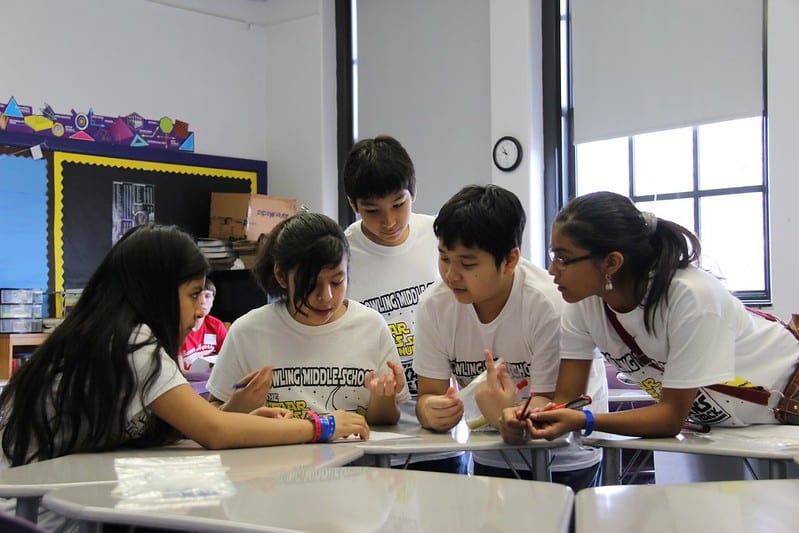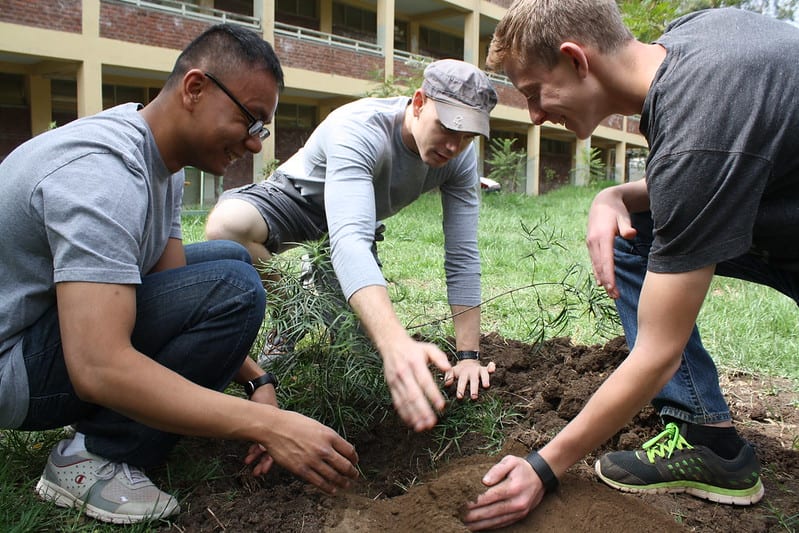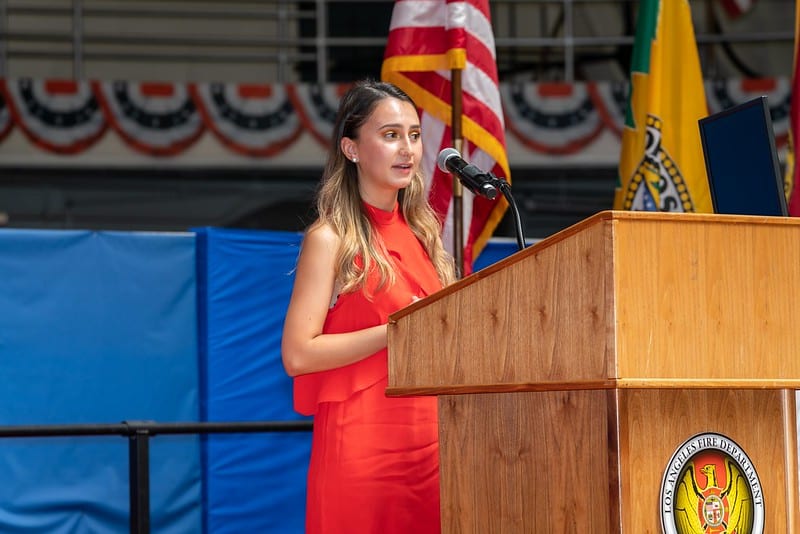This is the first in a 2-part blog series highlighting different aspects of Service-Learning. In the next installment, we will share four examples of service-learning project ideas.
Service-learning isn’t simply a buzz-word, but a pedagogy with some powerful promises. Studies have shown that service-learning has improved retention rates for first-year college students, and many educators celebrate its ability to develop student leadership and civic responsibility.

To put it simply, service-learning is the combination of community service connected to academic study. The ideas behind service-learning stem from John Dewey, the 19th century educator who believed connecting knowledge and skills to direct experiences, and not just rote memorization, was the sweet spot for educational development and strengthening democratic societies.
Whether in the social studies or the sciences, there are many ways you can integrate service-learning into your own curriculum in order to promote civic engagement.
So, How Is Service-Learning Different from Volunteering?
Let’s explore what make service-learning different from volunteering. While community service can be a one-time volunteer activity or project, service-learning is a sustained activity that has a curricular connection.
Service-learning must include:
• Reciprocal Benefits: Service-learning benefits a specific community’s needs as well as students’ academic learning and civic growth. Most importantly, good service-learning is a collaborative partnership, where the partner community is involved in the planning and holds equal power. Projects that aren’t collaborative, inclusive, and respectful can re-inforce a damaging narrative that certain communities must be “helped” from people outside that community. “Critical service-learning” emphasizes social justice and helps students critique and highlight these power structures while undertaking their project.
• Planning and Reflection: Students must first undertake thorough research and planning to identify a community need, learn more about the issues, and work with their community partners to outline the service project. During or after the activity, guided reflection helps students consider their experience and prior assumptions, and articulate what they learned. Reflection can include journal writing, group discussions, and presentations that prompt students to critically think about the connections between their knowledge and direct experiences.
• Connection to Course Content: Service-learning activities always connect directly to learning objectives in a course or curriculum, helping students gain deeper mastery of skills, concepts, and themes. This supports “experiential education,” or learning through experience.
The Four Types of Service-Learning
Service-learning projects can take many forms. There’s no one-size fits all approach, however they typically fall into one of these main areas:
Direct
In direct service-learning projects, students are in the presence of the individuals whose needs the project is addressing. Tutoring youth to promote literacy or visiting an elderly community to combat older adult isolation are some examples of direct service-learning.

Indirect
Students may not have any interaction with community members during an indirect service-learning project. Examples of indirect service-learning activities include ecosystem restoration projects, drives (food, disaster relief supplies, etc.), or fundraisers.
Research
Projects that involve gathering data and compiling information to benefit a specific community are considered research service-learning. These projects could include researching laws, history, or best practices to create a resource guide, or collecting data on air or water pollution in a neighborhood or natural habitat, and then presenting the data and analyzing trends to pinpoint broader issues.

Advocacy
Advocacy service-learning gets students speaking up and spreading awareness about an issue. Creating awareness campaigns, letter-writing to public officials, creating public speaking events, attending and reporting on city council events and forums, or working with elected officials to find solutions are all examples of advocacy service-learning.
In our next installment, we will be covering four examples of service-learning projects, and how they can support civic engagement.
Image credits: Students working together in classroom (2013-01-26 Education Rainbow Challenge 238 by dynamojon is licensed under CC BY-SA 2.0); Students planting trees (World Day to Combat Desertification and Drought by U.S. Embassy Addis Abba is a U.S. government work; Student speaking at podium (2019 LAFD Merit Scholarship Awards by the Los Angeles Fire Department is licensed under CC BY-ND 2.0)




